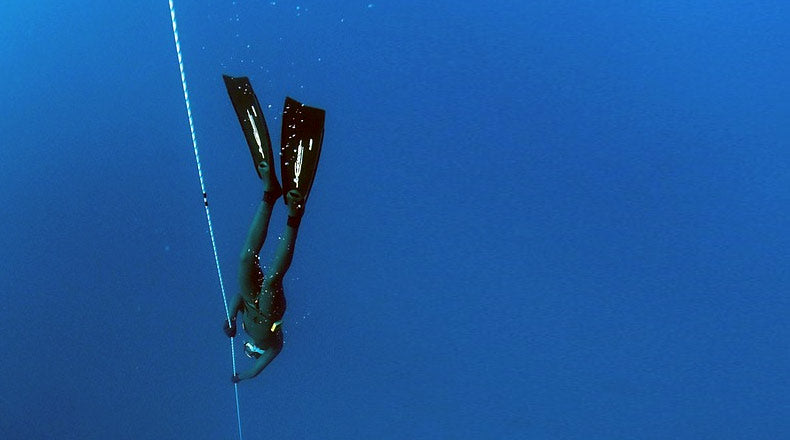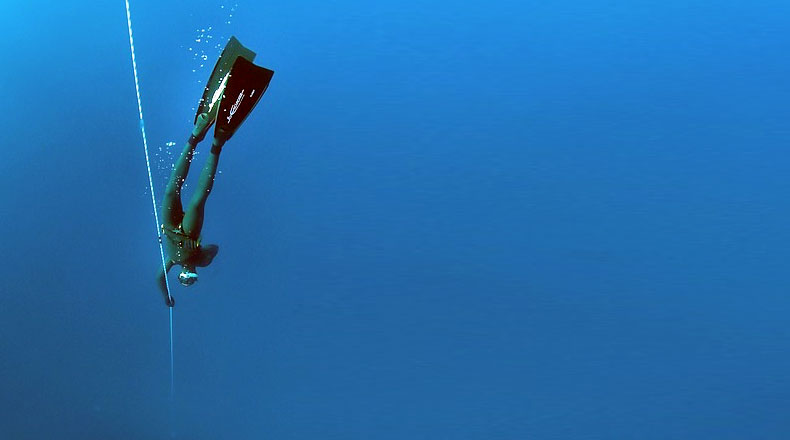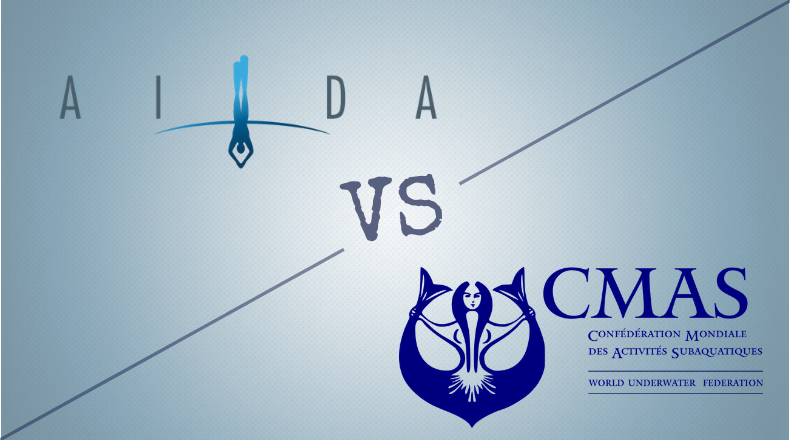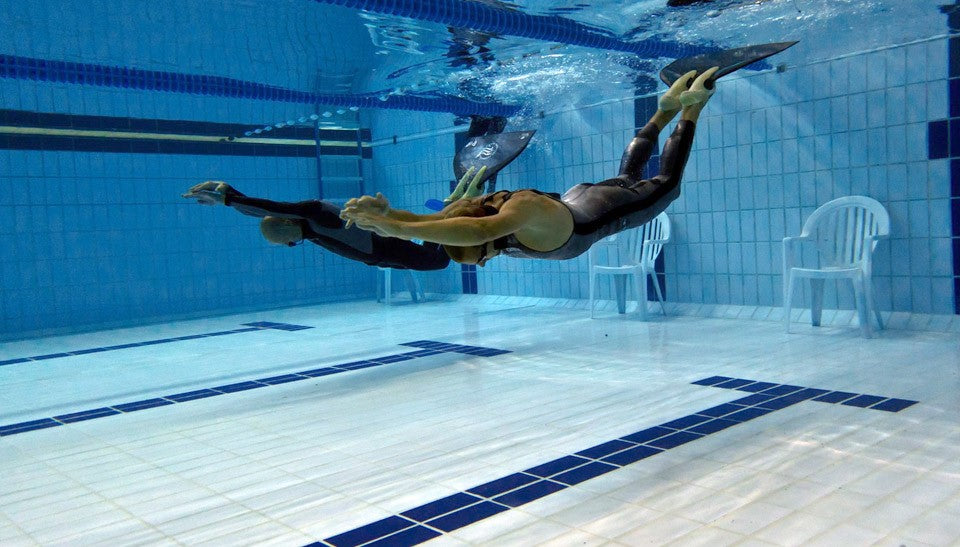Freediving Disciplines: A Brief Overview

Freediving has been practiced around the world for millennia, but it wasn’t until the second half of the twentieth century that it became a competitive sport. Modern-day freediving has an array of different disciplines to reflect the various ways that people can be in the water and hold their breath.
All of the freediving disciplines can be generally divided into depth and pool disciplines. All in all, there are six officially recognized competitive disciplines and two non-competition disciplines (according to AIDA, the Worldwide Federation for breath-hold diving). In addition to that, there are endless other disciplines, created by different certification agencies or practiced by sport enthusiasts.
Depth Disciplines
Constant Weight (CWT) is the most widely practiced depth discipline of freediving. The diver descends and ascends vertically along a dive rope using the propulsion of a monofin or bi-fins and/or arm strokes. The dive rope cannot be used for pulling and the diver is only allowed to hold on to it once, while turning at the bottom and preparing for the ascent. As the name of this discipline suggests, the diver is not allowed to change the amount of ballast weight used during the course of the dive.
Constant Weight Without Fins (CNF) requires the divers to use only muscle strength to propel themselves downwards and back up again. The freediver normally descends on breaststroke pretty similar to what swimmers do. Just like in CWT, the diver is not allowed to pull on the rope or change the weight used. CNF is considered the most difficult of the three competitive depth disciplines.
Free Immersion (FIM) is similar to Constant Weight Without Fins as the amount of weight during the dive has to stay the same, and the diver cannot use any propulsion equipment. However, in this case, the diver can pull on the guide rope to descend and ascend. FIM is considered one of the more relaxing disciplines, since the technique is fairly easy to learn, the diver can use both “head down” and “head up” position, and go down as slowly as he/she wants. Free Immersion is also a great discipline to practice equalization.

The following two disciplines are non-competition disciplines, meaning that divers can only organize individual record attempts, rather than competing against each other on the same day.
Variable Weight (VWT) is the discipline where the freediver can change the amount of weight used during descent and ascent. This means that the divers can use a sled to descend, and then ascend to the surface with the aid of a monofin, bi-fins, or by using upper body strength to pull themselves up the rope.
No Limits (NL) is the deepest discipline in freediving. Here the diver also uses a sled or other type of ballast weight to make a rapid descent, and then uses a buoyancy device, such as a balloon or a vest with inflatable compartments, to ascend. Because the freediver doesn’t have to use his/her own energy to descend and ascend, this discipline requires mainly good equalization technique and pressure toleration. New No Limits records are currently not sanctioned by AIDA due to the ever-increasing risks that divers have been putting themselves under to reach depths far exceeding 200m.
Pool Disciplines
Dynamic With Fins (DYN) is a discipline, where the divers attempt to cover the greatest possible distance, rather than depth. The divers are allowed to propel themselves forward with the help of fins, either monofin or bi-fins, and swimming movements with the arms only. Most freedivers prefer to do DYN in a 50-meter pool since doing fewer turns saves a lot of energy.
Dynamic Without Fins (DNF) is just like DYN, but with no propulsion aids allowed. The divers use only their arms and legs to propel themselves forward. In this case, most freedivers prefer a 25-meter pool, since pushing off the wall without fins is very efficient and adds many “free” meters to the performance, so every turn gives a tremendous advantage.
Static Apnea (STA) is the only discipline where performance is measured by duration. The divers are required to hold their breath for as long as possible with their face submerged in the water while floating on the surface or standing on the bottom of the pool. Static apnea is also a great method of training for other freediving disciplines.

CMAS Disciplines
CMAS, another big competitive freediving organization, recognizes a total of 12 freediving disciplines, with 9 being similar to what AIDA offers. The only AIDA discipline not offered by CMAS is No Limits.
One of the most interesting aspects of the CMAS system is that it separates monofin and bi-fins diving into separate disciplines, with separate national, regional and world records registered, in both Dynamic and Constant Weight freediving. Without Bi-Fins/Monofin separation, there are 3 disciplines that are unique to the CMAS system.
Speed Endurance Apnea is a discipline where the diver tries to cover a fixed distance, typically 100 meters or 400 meters in the shortest possible time. The athlete combines underwater swimming with fins and passive recovery at the pool ends. The faster the diver swims and the shorter rests he/she takes, the better time they will achieve.
Jump Blue is an open water discipline where the athlete descends and attempts to cover maximum distance swimming around a 15-meter square at 10 meters depth before surfacing again. The diver has to use a monofin or bi-fins.
Skandalopetra is an old Greek discipline and the only team event in freediving. One of the athletes in a team dives with the help of a stone (usually a marble slab) attached to a rope. When the diver reaches the desired depth, his or her partner on the surface starts hauling the diver up using muscle power. To honor the traditions of the sport no diving mask, suit or fins are allowed, the diver may, however, use a nose clip and fluid goggles.
Photo Credit - Alexander Bubenchikov




